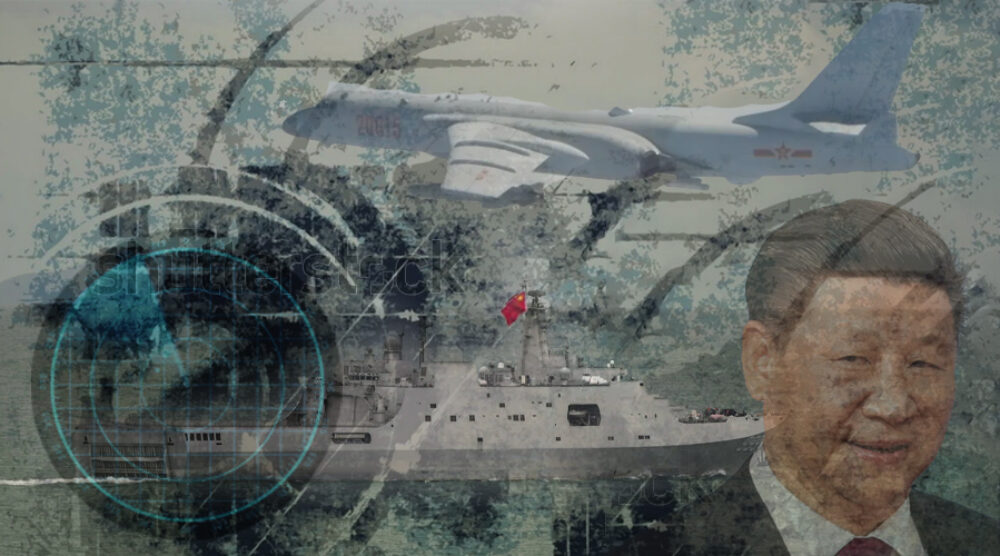In recent years a new term has thrust itself into the military lexicon. ‘Grey-zone’ has become verbal shorthand for the type of prickly interactions many Indo-Pacific states have with China. These new kind of fractious interstate relations are equally baffling and disconcerting but fortunately falls short of war. However, the nature of grey-zone activities means defence forces are deeply involved in addressing the challenges they pose. Grey-zones may not feature warfighting but they do involve war-fighters.
This article looks at the grey-zone from a defence viewpoint and mainly at the strategic level. The highest form of strategy is grand strategy, which involves building and applying power. Building and applying power are clearly interdependent, however, this article focuses on applying power. It does not discuss building the power necessary, as that is more of a mobilisation problem.
The article initially discusses what grey-zone is, and equally crucially is not, to derive some implications useful when considering responses. The second part discusses some of the conceptual background to China’s imaginative and innovative grey-zone actions. These actions happen within a particular intellectual framework and a specific context; they are not some isolated, independent activity. The third section notes some planning issues and suggests some response options while the fourth looks to the future to appreciate how China’s grey-zone activities might evolve, potentially positively but possibly negatively. The final section delves into two conceivable grey-zone responses the RNZAF could usefully become involved in.
Defining Grey-Zone
Michael Mazarr comprehensively examined the idea of grey-zone in a seminal 2015 work. He considered grey-zone conflicts involved the purposeful pursuit of political objectives through carefully designed operations; a measured movement towards the objectives rather than seeking decisive results within a specified time period; acting to remain below key escalatory thresholds so as to avoid war; and the use of all the instruments of national power, particularly non-military and non-kinetic tools.
Readily apparent is that grey-zone activities do not include making war, instead actively seeking its avoidance. In so excluding war but also not being peace, the grey-zone idea blurs the distinction between the two, creating an undefined middle ground. If peace is the ‘the absence of violence’, the grey-zone idea generates a conceptual puzzle in not being either war or peace. This definitional pedantry highlights that a core aspect of grey-zone is that aggressors rely on the existing peace being sufficiently resilient for the grey-zone activities to succeed.
Given these broad grey-zone characteristics, several implications become apparent. Grey-zone actions aim to gradually accumulate successes. That is, they are a cumulative strategy not a sequential strategy in the classification schema that J.C. Wylie noted in the mid-1960s. A cumulative strategy is what Wylie thought air warfare strategies were: aircraft went out every day, fought small tactical actions and gradually won. There was no single grand decisive battle like Waterloo or Gettysburg or Kursk, just a day by day accumulation of successes until a tipping point was reached.
This also means that grey-zone actions don’t just happen; they are implemented in a carefully-designed campaign plan controlled by strategic-level commanders. The highest levels of the Communist Party of China (CPC) and PLA command structures are involved. Grey-zone actions are not those of tactical commanders free lancing. This highlights that while Chinese grey-zone operations involve coordinating many non-military entities, they ultimately rely on hard military power provided by the PLA and wielded by the Party. Without the PLA, China’s grey-zone activities would be very different and much less effective.
Importantly, the aim in these grey-zone operations is to avoid and indeed prevent military escalation. The operation at the tactical level must be tightly controlled as the Chinese strategic leadership do not wish to accidently start a war. It’s a form of carefully scripted brinkmanship.
Please click here to read the full “China’s grey-zone activities: Concepts and possible responses” article published at KEA Learning, written by Griffith Asia Institute Visiting Fellow, Dr Peter Layton.








